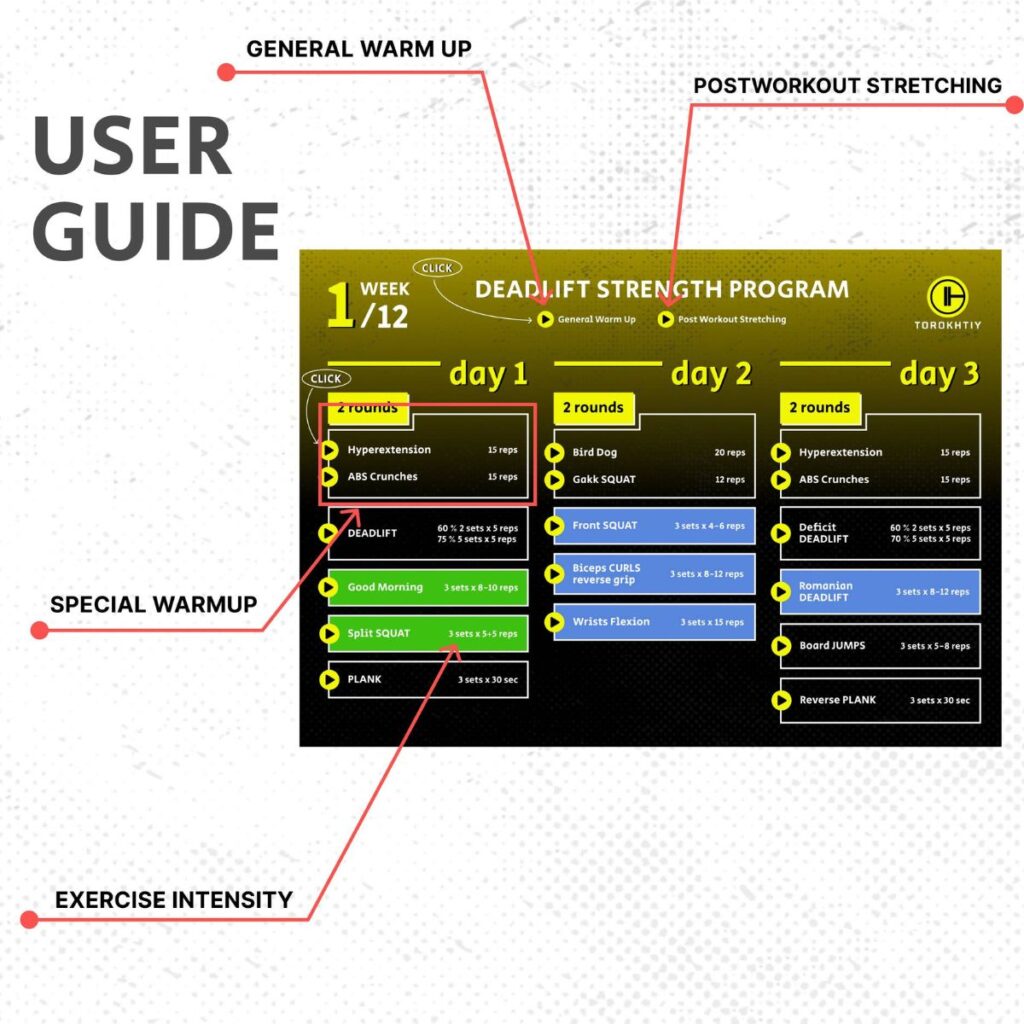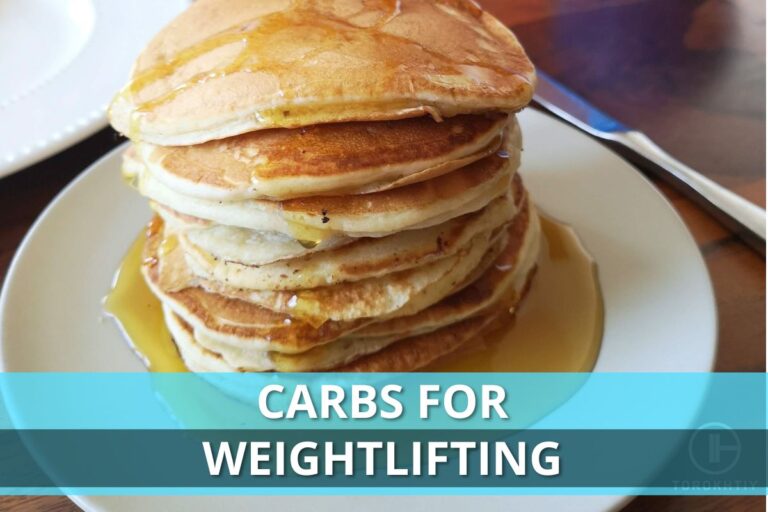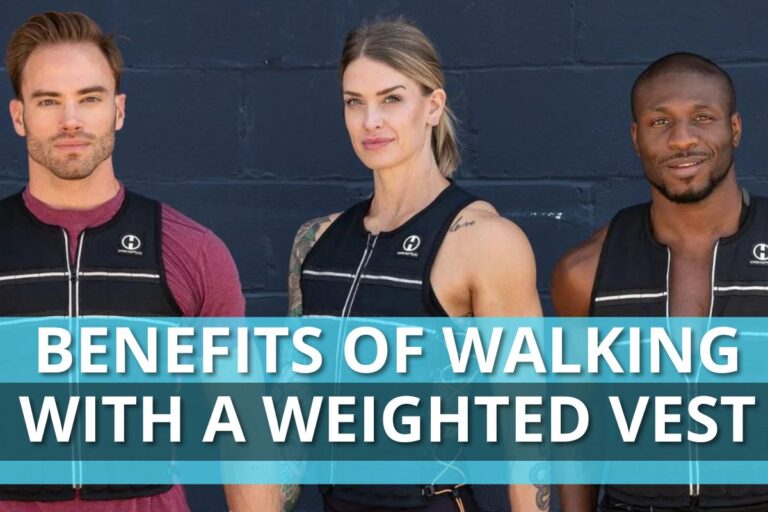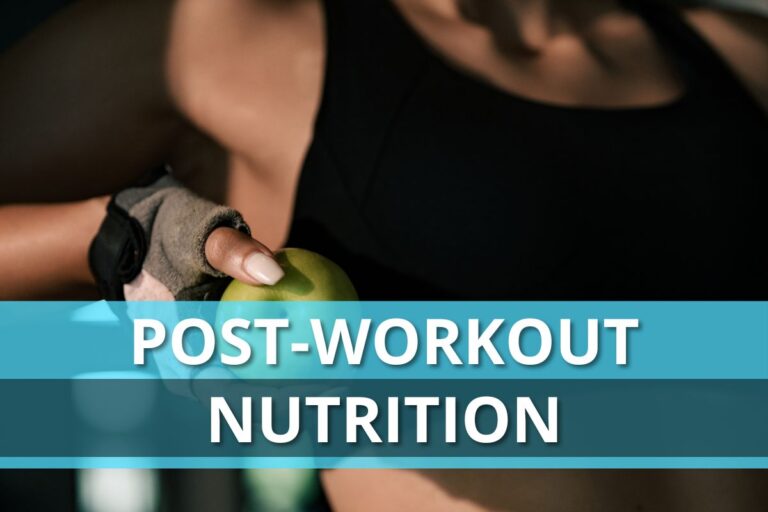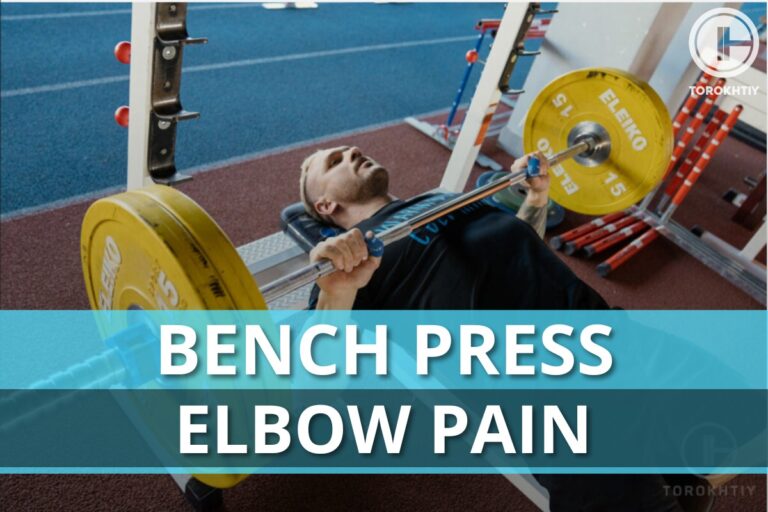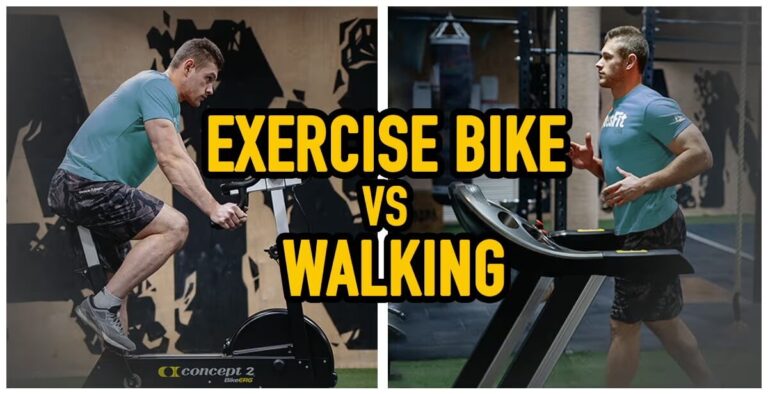Understanding Deadlift Stances
Deadlift stances can make a significant impact on your exercise performance, comfort, safety, and results. Choosing the proper stance for your body type and athletic level is essential for getting the most out of your deadlift.
But the question is, how wide should you stand, where should you place your feet, and which areas of your body will be most affected depending on your choice? Let’s find out.
What is impact of deadlift stances? Deadlift stances determine the type of exercise you’ll get. Wide stance deadlifts have a shorter range of motion (ROM) and hit different muscle groups than a typical narrow stance deadlift. Experimenting with different deadlift stances can diversify your workout and help you hit new goals.
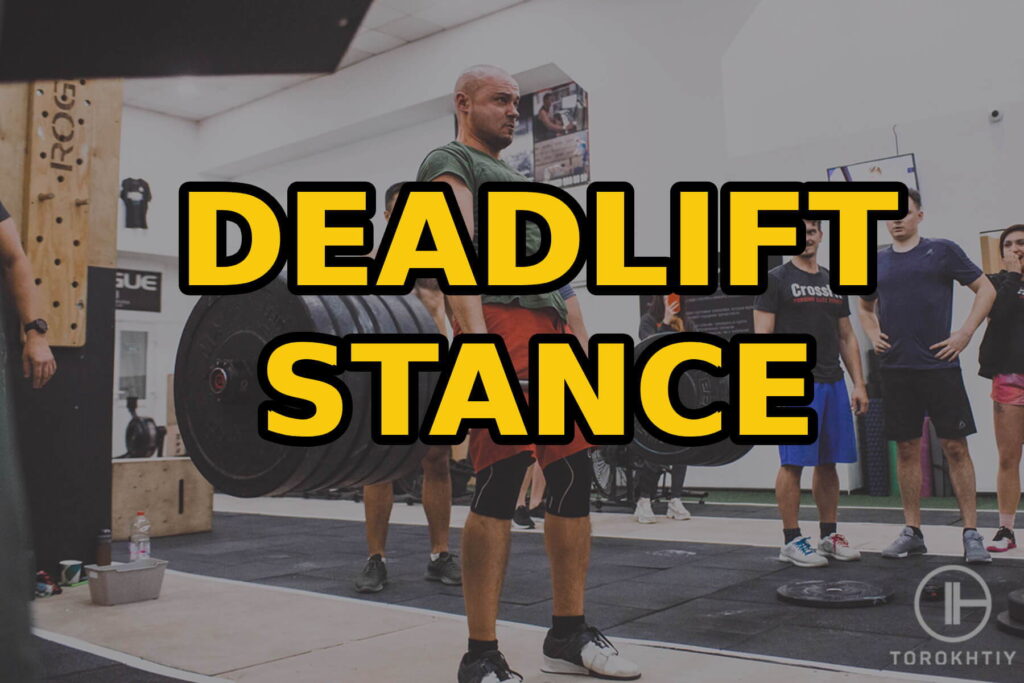
What Is Deadlift Stance (Why Is Important, What Does It Affect)
Deadlift stances refer to the foot placement and leg position when performing a deadlift exercise and its variations. In general, we categorize them under narrow or wide stance deadlifts.
Even slightly altering between different deadlift stances can noticeably change the overall exercise dynamic. The deadlift stance width is an important point of consideration. This affects several exercise aspects, including the range of motion, the amount of weight you can lift, the primary muscle groups targeted, the distribution of forces throughout your body, your center of gravity, and even the risk of injury.
A wider stance typically has a shorter range of motion than a close stance deadlift. This can give you more leverage with your hips, but it also forces you to lean forward more during the initial portion of the exercise, which can impact your balance and stability. Meanwhile, a narrower deadlift has a longer range of motion, but it starts in a more upright position and will target your quads and posterior chain more.
Your deadlift feet position can change which muscles you’re working out, too. For example, if your toes are straight, such as with a conventional deadlift, you should feel more “burn” in your quads and hamstrings. Meanwhile, if you point out with your toes at a larger angle, such as with a Sumo deadlift, you will be using your hips and adductors more.
Finally, it’s important to note that a wider stance may put more stress on your hips and lower back, while a narrower stance puts more stress on the knees and quads. Keep this in mind so you can adjust your stance to better fit your workout goals and your physical health.

Where Should You Feel Deadlifts?
Based on the targeted muscle groups, the area where you should feel deadlifts hit the most is your posterior chain. This primarily includes your lower back, glutes, and hamstrings. Additionally, you should also experience activation in your quadriceps, core muscles, and calves during various stages of the lift. Lastly, since grip strength is a crucial part of deadlifts, you can expect to feel robust muscle activation in the lower arm – particularly your forearms and fingers- especially during an olympic bar deadlift.
What Is The Difference Between Common Deadlift Stances?
1. Conventional Deadlift Stance
The conventional or standard deadlift stance is the most fundamental and widely used variation of this exercise, making it a staple in many strength training programs. Beginner lifters typically start with this stance, so it should be familiar to you if you’ve done deadlifts before. Although this is considered the most basic variation of deadlift stances, it’s by no means easier than the others and requires practice to perform correctly and safely.
To assume a conventional deadlift stance, you first need to stand with your feet shoulder-width apart, although some athletes may opt for a slightly wider or narrower stance depending on their body shape and size. During this stance, your feet should be pointing forward under a slight outward angle of no more than 10-15 degrees, which you’re free to adjust based on your foot size and comfort.
The conventional deadlift stance targets muscles in the lower body and posterior chain, including the glutes, hamstrings, and lower back. As you lift the barbell off the ground, you should feel the tension build in your hamstrings and glutes. As the bar passes your knee point and your upper body starts to rise, the tension should transfer over to your core and lower back. At the height of the exercise, also known as the lockout phase, you should feel weight distributed throughout the entire body.
2. Sumo Deadlift
The Sumo deadlift stance is a popular variation of the deadlift exercise. To assume the sumo deadlift stance width, you need to stand with your feet at or slightly wider than shoulder-width apart, with your toes pointing outward at an angle of roughly 45 degrees. This stance requires greater mobility in the hips, groin, and ankles, which can make it more challenging than a conventional stance depending on your mobility and flexibility.
The sumo deadlift stance targets many of the same muscles as the conventional deadlift, including the glutes, hamstrings, and lower back, but also puts more emphasis on the adductors and quadriceps. However, thanks to an overall shorter range of motion (ROM) compared to conventional deadlifts, it puts less stress on the back and more on the hips and knees, making it a preferred compound exercise for lower body development.
As you lift the bar off the ground in a sumo stance, you should feel the tension build in your adductors and quads. As the bar passes your knee point and your upper body starts to rise, the tension should transfer over to your glutes, hamstrings, and lower back. At the lockout phase, the weight should feel evenly redistributed throughout the entire body, just like in the conventional deadlift stance.
3. Deficit Deadlift Stance
The Deficit deadlift is a variation of the conventional deadlift that requires standing on a raised platform, usually 2-4 inches high, to increase the range of motion for the exercise. This increased range of motion demands more force when lifting the barbell, making the exercise more challenging and recruiting additional muscle fibers in the legs and back.
Research indicates that deficit deadlifts can help improve strength and muscle activation in the lower body, particularly in the hamstrings, glutes, and erector spinae muscles. Additionally, the increased range of motion can help improve mobility and flexibility in the ankles, knees, and hips. However, this variation is better suited for experienced lifters who are well-versed in deadlift variations.
To perform a deficit deadlift, simply find a 2-4 inch elevated surface to stand on. Most lifters you see doing this variation either stand on the edge of their lifting platform or use a thick weight plate. Place the barbell on the floor below you and simply perform a regular olympic bar deadlift from this elevated position.
4. Squat Stance Deadlift
The last variation worth mentioning is the Squat stance deadlift. This is an emerging term for an exercise that’s not yet widely recognized, although it has its advocates in both coaching and physiotherapy. As the name suggests, the exercise requires you to perform a deadlift from a squat stance, which means standing with your feet shoulder-width apart, with toes pointing very slightly outward.
The overall stance, including the exercise’s range of motion and impact on the body, is practically identical to the Sumo stance. However, due to the forward-pointing toes, the Squat stance deadlift requires a greater amount of mobility in the hips, knees, and ankles, increasing the overall risk of injury in these areas. This makes it difficult to recommend for most people over Sumo deadlifts. That said, it’s worth mentioning simply because anatomy varies from person to person, so it may be worth trying to see if it works better for you than a typical Sumo stance.
How to Choose the Deadlift Stance (Factors to Consider When Choosing the Stance for You)
The last variation worth mentioning is the Squat stance deadlift. This is an emerging term for an exercise that’s not yet widely recognized, although it has its advocates in both coaching and physiotherapy. As the name suggests, the exercise requires you to perform a deadlift from a squat stance, which means standing with your feet shoulder-width apart, with toes pointing very slightly outward.
The overall stance, including the exercise’s range of motion and impact on the body, is practically identical to the Sumo stance. However, due to the forward-pointing toes, the Squat stance deadlift requires a greater amount of mobility in the hips, knees, and ankles, increasing the overall risk of injury in these areas. This makes it difficult to recommend for most people over Sumo deadlifts. That said, it’s worth mentioning simply because anatomy varies from person to person, so it may be worth trying to see if it works better for you than a typical Sumo stance.

How Much Can the Average Man and Woman Deadlift?
1. Muscle Engagement
Deadlifts tend to hit the same primary muscle groups regardless of the variation.
That said, altering between deadlift feet position and stances changes up the total ROM, letting you put more emphasis on certain muscle groups. As previously discussed, the longer ROM stances – such as the conventional or deficit deadlift – target the posterior chain to a greater degree. Meanwhile, shorter ROM stances, like the Sumo or Squat deadlift, are better at targeting the lower body, particularly the hips and adductors.
2. Athlete Size
Research suggests that one of the most important factors to consider when choosing your deadlift stance width is your shape and size. According to the study, athletes with larger body sizes and longer limbs tend to feel more comfortable with deadlift stance variations that have a larger range of motion, such as the conventional or deficit deadlift. On the other hand, athletes with shorter limbs and a shorter torso relative to their limb length find the shorter range of motion stances, like the Sumo or Squat stance, more comfortable.
3. Personal Health
The most comfortable deadlift feet position for you may depend on your personal health, such as your injury history and chronic pain. When selecting your stance, keep in mind that a wide leg deadlift generates more force from the hip and knee area and puts less stress on your back, while the opposite is true for narrow deadlifts. Based on your medical history, it should be easy to determine which is best for you, however, consulting a doctor or physical therapist is always a good idea.

4. Fitness Level
Your overall fitness level may play a role in determining which deadlift stance is best suited for you. For beginners, it is recommended to start with a standard close stance deadlift to learn the proper exercise technique and familiarize themselves with their maximum weight.
Experienced athletes can experiment with various deadlift stances to find what works best for them. However, their joint mobility, particularly in the hips, knees, and ankles, can impact their ability to assume the correct starting position. If someone has limited mobility, they may need to adjust their stance to compensate.
Deadlift Stance Common Mistakes
1. Barbell Distance
In a proper deadlift stance, the barbell should be directly over the midfoot during the starting position, and even lightly touching or grazing your shins as you lift it up. Placing the bar too far from your legs during your initial stance will require greater power output from your lower back, which is a common reason for deadlift injury.
2. Back Arching
Another common mistake when lifting dead weight is not maintaining a straight spine. If you need to arch your back to reach the barbell when assuming the starting position, then the stance you are attempting may not be adequate for your current mobility and flexibility level.

3. Hip Height
To assume a proper deadlift stance, it is essential to position your hips at the right height. If you place your hips too high, generating power from them will become challenging, and your back will bear most of the initial load. This can result in difficulty lifting the weight and may lead to injury. On the other hand, if you place your hips too low, you will create a longer range of motion, placing stress on your lower back and hamstrings, and making the lift more challenging.
Therefore, the ideal height level of your hips for your body size is slightly above your knees. This position helps keep your back straight while aligning your shoulders, palms, and feet correctly. Proper alignment will help ensure that you can generate power from your hips while maintaining good form, reducing the risk of injury and allowing for safely and effectively lifting dead weight.

Should Your Deadlift Stance And Squat Stance Be The Same?
No, the deadlift and squat are two separate exercises with distinct objectives. In a regular squat, a wider stance is adopted to enable the hips to move downwards to or below knee level and then upwards again, all the while maintaining an upright torso position and keeping your balance. Conversely, in deadlifts, the hips remain at a relatively similar level and only flex forward and backward, while the torso sways back and forth.
That said, there is a hybrid exercise called the squat stance deadlift. However, this wide leg deadlift stance is unique and has its own purpose, as discussed above. In general, your standard deadlift and squat stances won’t be the same.
🔻12-Week Deadlift Strength Program by Oleksiy Torokhtiy
Unlock your true potential with our Deadlift Strength Program!
Designed for athletes by 2-time Olympian Oleksiy Torokhtiy, this 12-week program focuses on enhancing your deadlift strength, strengthening your back and legs.
Program details:
- 12 weeks;
- 3 days / week;
- 45-120 minutes per session;
- 50+ specific exercises;
- Focus on New Result in Deadlift;
- One-time payment, no recuring payments;
- Full access to all training content.
Start now and boost your deadlift results!
FAQ
What Is Better Conventional VS Sumo Deadlift Stance?
The conventional and Sumo deadlift overlap in terms of strength development and health benefits. In terms of results, the sumo stance tends to be slightly better at lower body development, while the conventional narrow stance deadlift works your overall posterior chain, particularly the lower back.
More importantly, research suggests that athlete size can also determine the best type of deadlift on a person-to-person basis. According to the study, athletes with lengthier proportions performed better in the conventional deadlift. Conversely, those with shorter proportions showed increased performance in the sumo deadlift.
Where Should You Point Your Toes In Your Deadlift Stance?
During a typical close stance deadlift your toes should be slightly pointed out, no more than a 15-degree angle. This slightly angled toe position creates external rotation at the hips, which helps with stability and explosive power. Additionally, when you point your toes outward you should feel higher muscle activation in the glutes and hamstrings, which are two major muscle groups targeted by deadlift.
During Sumo deadlifts, the ideal toe spread is roughly 45 degrees. This wide leg deadlift stance points the knees and hips outward and allows them to stay in line with your feet and flex naturally, improving your balance, increasing your weight max, and preventing injury.
How Much Can an Average Person Deadlift?
Depending on the individual’s build, a man can typically deadlift anywhere from (77 kg – 131) 170 to 290 pounds when performing a traditional variation of the exercise. The typical average deadlift weight for female is around half of their body weight, while intermediate lifters are able to deadlift approximately 1.5 times their body weight.
Conclusion
The deadlift stances you use will determine the type of exercise you will get. Your leg width and foot placement affect the range of motion, targeted muscle groups, maximum capacity, center of balance, force distribution, as well as injury risk. Trying out different deadlift stances can help you find the one most comfortable based on your physical health and preferences.
Wide stance deadlifts reduce the range of motion and increase lower body development, while also reducing stress on the back. Conversely, a narrow stance deadlift has a longer range of motion and puts more exercise focus on the posterior chain.
Do you practice deadlifts as part of your workout routine? If so, which stance do you prefer? Leave a comment to let us know and don’t forget to follow our social media pages where we post lots of valuable fitness content.
Also read:
- How to Improve Grip Strength for Deadlift
- Barefoot Deadlift
- Is Sumo Deadlift Cheating
- Difference Between Good Morning and Deadlift
- Functional Fitness Deadlift Workouts
- What Muscles Does Deadlift Work
- Deadlift Bar Weight
- Deadlift Program
References:
- How to Strengthen Your Posterior Chain Muscles // Healthline: https://www.healthline.com/ health/posterior-chain
- The Sumo Deadlift // LWW: https://journals.lww.com /nsca-scj/Abstract/ 2017/08000/ The_Sumo_ Deadlift.13.aspx
- A three-dimensional biomechanical analysis of sumo and conventional style deadlifts // NIH: https://pubmed.ncbi.nlm.nih.gov /10912892/
- Exercise Technique: Deficit Deadlift // Researchgate: https://www.researchgate.net/ publication/328360991 _Exercise_Technique_ Deficit_Deadlift
- Electromyographic activity in deadlift exercise and its variants. A systematic review // NIH: https://www.ncbi.nlm.nih.gov /pmc/articles/ PMC7046193/
- Anthropometrical Determinants of Deadlift Variant Performance // NIH: https://www.ncbi.nlm.nih.gov /pmc/articles /PMC6683626/
- Electromyographic activity in deadlift exercise and its variants. A systematic review // NIH: https://www.ncbi.nlm.nih.gov/ pmc/articles/ PMC7046193/
- Anthropometrical Determinants of Deadlift Variant Performance // NIH: https://www.ncbi.nlm.nih.gov/ pmc/articles/ PMC6683626/
Why Trust Us?
With over 20 years in Olympic Weightlifting, our team does its best to provide the audience with ultimate support and meet the needs and requirements of advanced athletes and professional lifters, as well as people who strive to open new opportunities and develop their physical capabilities with us.
By trusting the recommendations of our certified experts in coaching, nutrition, dietology, and sports training programming, as well as scientific consultants, and physiotherapists, we provide you with thorough, well-considered, and scientifically proven content. All the information given in the articles concerning workout programming, separate exercises, and athletic performance, in general, is based on verified data. We ensure that you can rely on our professionals’ pieces of advice and recommendations that can be treated as personalized ones which will benefit you and fully meet your needs.
The product testing process is described in more detail here
Author: Sergii Putsov
Head of Sport Science, PhD
Best Results: Snatch – 165 kg,
C&J – 200 kg
Sergii Putsov, Ph.D., is a former professional weightlifter and National team member, achieving multiple medals in the 94 kg weight category at national competitions. With a Master’s degree in “Olympic & Professional Sport Training” and a Sport Science Ph.D. from the International Olympic Academy, Greece, Sergii now leads as the Head of Sport Science. He specializes in designing training programs, writing insightful blog articles, providing live commentary at international weightlifting events, and conducting educational seminars worldwide alongside Olympic weightlifting expert Oleksiy Torokhtiy.

